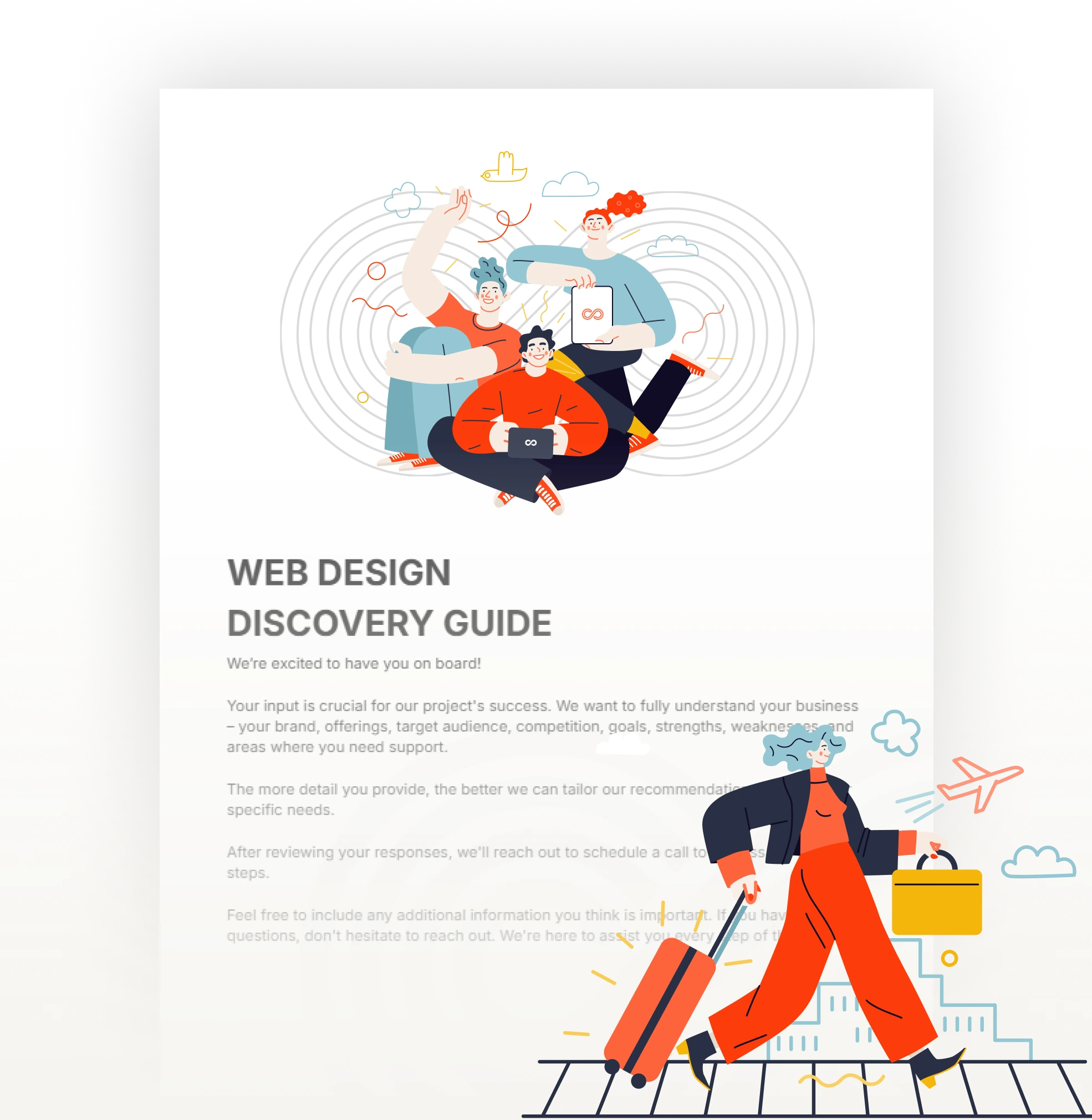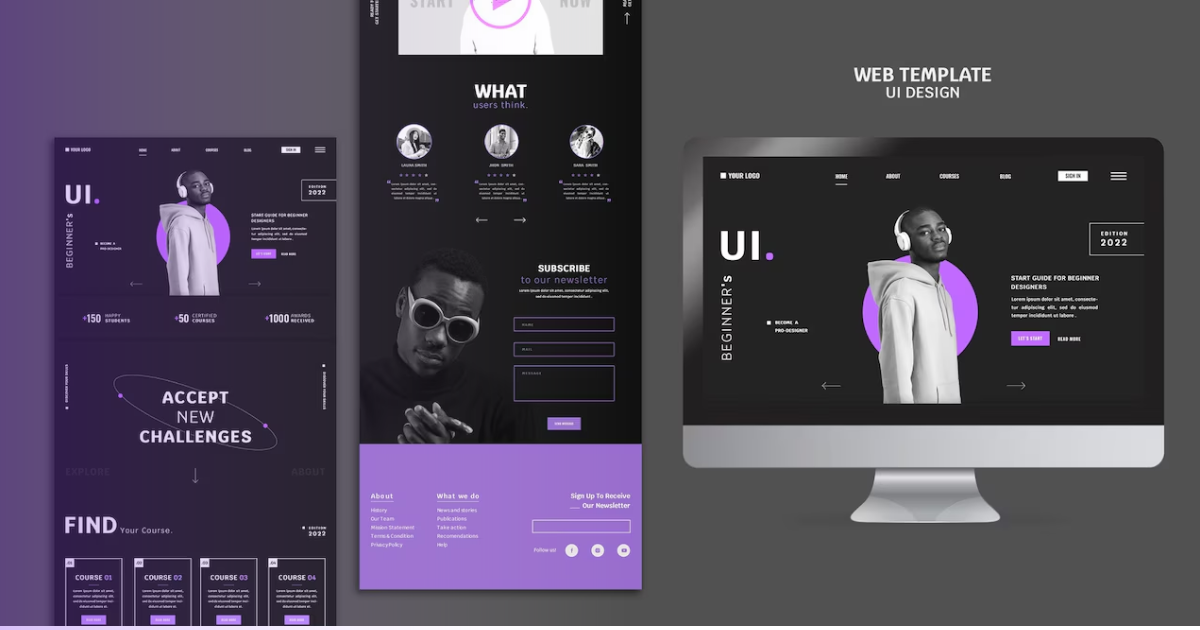The Very Best Kinds of Website Design to Enhance User Experience and Engagement
In the ever-evolving landscape of electronic communication, the effectiveness of Web style significantly impacts customer experience and involvement. Various layout strategies, such as minimalist, receptive, and interactive designs, each deal unique advantages that can accommodate varied individual demands. Understanding which kinds of website design finest offer these goals can be essential for services aiming to enhance customer complete satisfaction and retention. The question remains: which design aspects really resonate with users and foster purposeful involvement? The exploration of these principles discloses vital insights that might redefine your approach to Web layout.
Minimalist Website Design
As electronic landscapes end up being significantly messy, minimal Web layout has become a powerful method to boosting individual experience. This design viewpoint prioritizes simpleness, concentrating on vital components while eliminating unnecessary distractions. By making use of ample white area, uncomplicated navigation, and a restricted shade scheme, minimalist layout cultivates clarity and guides customer focus to key web content.
The core concept of minimalist Web design is to develop a smooth interaction for individuals. By decreasing cognitive tons, individuals can promptly realize information without really feeling bewildered. This direct approach not just improves functionality yet likewise encourages interaction, as visitors are most likely to check out a site that is aesthetically enticing and simple to navigate.
Additionally, minimal style usually emphasizes typography and imagery, utilizing these elements strategically to share messages properly. This emphasis on essential components can boost brand identification and produce an unforgettable customer experience. Essentially, minimalist Web style is not just a pattern; it is a thoughtful technique that identifies the significance of user-centered style. By stripping away peripheral components, developers can produce a more interesting, reliable, and enjoyable Web experience for all individuals.
Responsive Web Design
In today's varied electronic atmosphere, responsive Web design has ended up being crucial for creating a smooth user experience across a plethora of tools. As individuals accessibility websites on smart devices, desktops, tablets, and laptops, the ability of a website to adapt its format and material to different screen dimensions and resolutions is vital.
Responsive website design utilizes versatile grids, photos, and CSS media queries to guarantee that Web content exists efficiently, no matter of the tool used. This approach not just enhances the aesthetic appeal of a site but additionally considerably enhances use. Customers are a lot more most likely to involve with a website that supplies a consistent experience, as it removes the disappointment of having to focus or scroll excessively.
Moreover, internet search engine, consisting of Google, prioritize mobile-friendly internet sites in search rankings. By taking on responsive style, services can enhance their presence and reach a more comprehensive target market. This strategy additionally simplifies website maintenance, as a single variation of the site can provide to all devices, decreasing the demand for several variations. In summary, responsive website design is a fundamental method that enhances user experience, interaction, and general satisfaction.
Interactive Web Design
Receptive Web design lays the groundwork for improving user experience, but interactive website design takes this a step further by engaging individuals in an extra dynamic means - Aligned Position Web Design. By integrating aspects such as computer animations, clickable prototypes, and real-time responses, interactive Web design captivates users, drawing them right into a richer browsing experience
This strategy not just fosters engagement however also motivates users to discover material actively instead of passively consuming it. Techniques such as gamification, where customers make rewards for finishing tasks, can dramatically improve the time invested on a site and enhance general complete satisfaction. Interactive attributes can streamline complex info, making it much more absorbable and pleasurable.

Including interactive style aspects can additionally bring about higher conversion rates, as individuals are most likely to engage with a website that proactively entails them. Aligned Position Web Design. Inevitably, interactive website design changes user experiences right into remarkable trips, making sure that visitors return time and once more
Flat Style
Identified by its minimalistic approach, flat style highlights simpleness and capability, removing unnecessary elements and concentrating on necessary attributes. This layout philosophy prioritizes functionality, making certain that customers can navigate user interfaces easily and efficiency. By utilizing a clean aesthetic, flat design eliminates the clutter commonly discovered in extra luxuriant designs, consequently boosting customer emphasis on material and performance.
The trademark of level style hinges on its use strong colors, easy typography, and geometric shapes. These elements add to an aesthetically attractive user interface that is both approachable and modern. In addition, level style promotes a sense of clarity, permitting customers to recognize necessary actions and info without distraction.
Furthermore, flat layout is particularly reliable in responsive Web style, as its simpleness discover this info here equates well throughout various gadgets and display dimensions. By focusing on necessary features, flat layout not only meets individual needs however additionally urges seamless interaction, making it an have a peek at this website essential component of efficient Web layout strategies.
Flexible Website Design
Flexible Web design personalizes the individual experience by developing multiple repaired designs customized to various display dimensions and devices. Unlike receptive layout, which fluidly changes a solitary format, flexible style uses distinctive layouts for particular breakpoints, making sure optimum discussion on numerous systems. This approach allows designers to concentrate on the distinct attributes of each gadget, improving functionality by providing specifically what individuals need based upon their context.
One of the key benefits of flexible Web style is its capability to enhance tons times and efficiency. By serving tailored content and images that fit the user's device, sites can reduce data usage and improve loading rates. This is specifically beneficial for users with slower connections or minimal information strategies.

Furthermore, adaptive style facilitates an extra consistent and regulated branding experience. Since designers develop multiple designs, they can ensure that the visual components align with the brand's identification across different systems - Aligned Position Web Design. This causes a cohesive individual experience, enhancing interaction and advertising user retention
Final Thought
Minimalist design fosters clarity and focus, while receptive layout makes certain flexibility throughout different gadgets, advertising access. Jointly, these style approaches contribute to the development of easy to use settings that not only enhance complete satisfaction however likewise drive higher conversion prices, emphasizing their crucial relevance in modern Web style techniques.

Minimalist layout promotes clearness and emphasis, while responsive style makes certain adaptability across different gadgets, advertising accessibility. Collectively, these design approaches contribute to the development of straightforward settings that not just boost satisfaction but also drive higher conversion rates, underscoring their vital value in modern Web style methods.